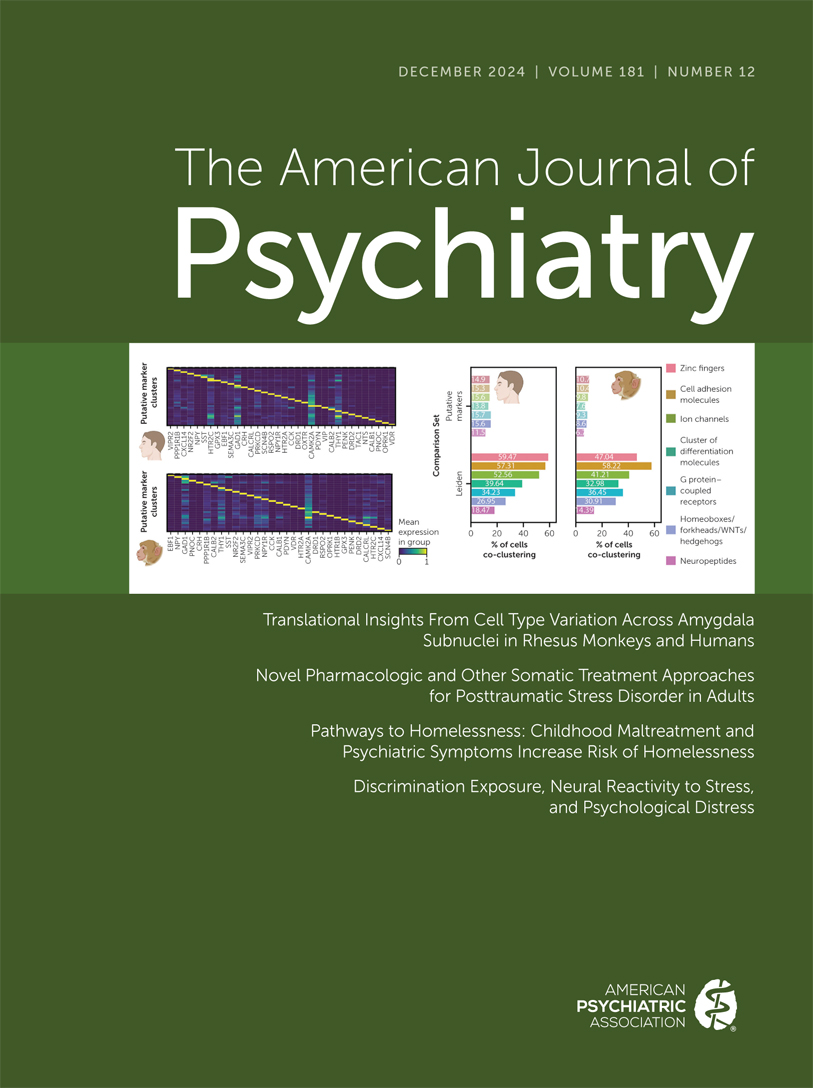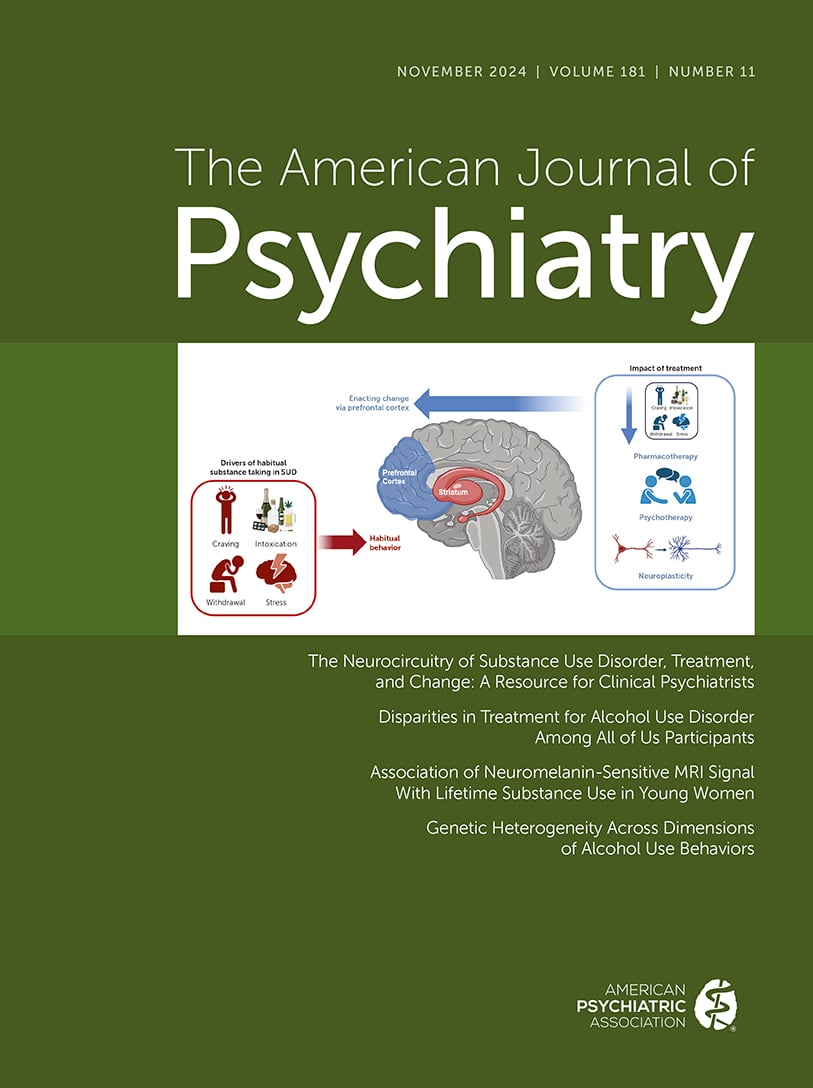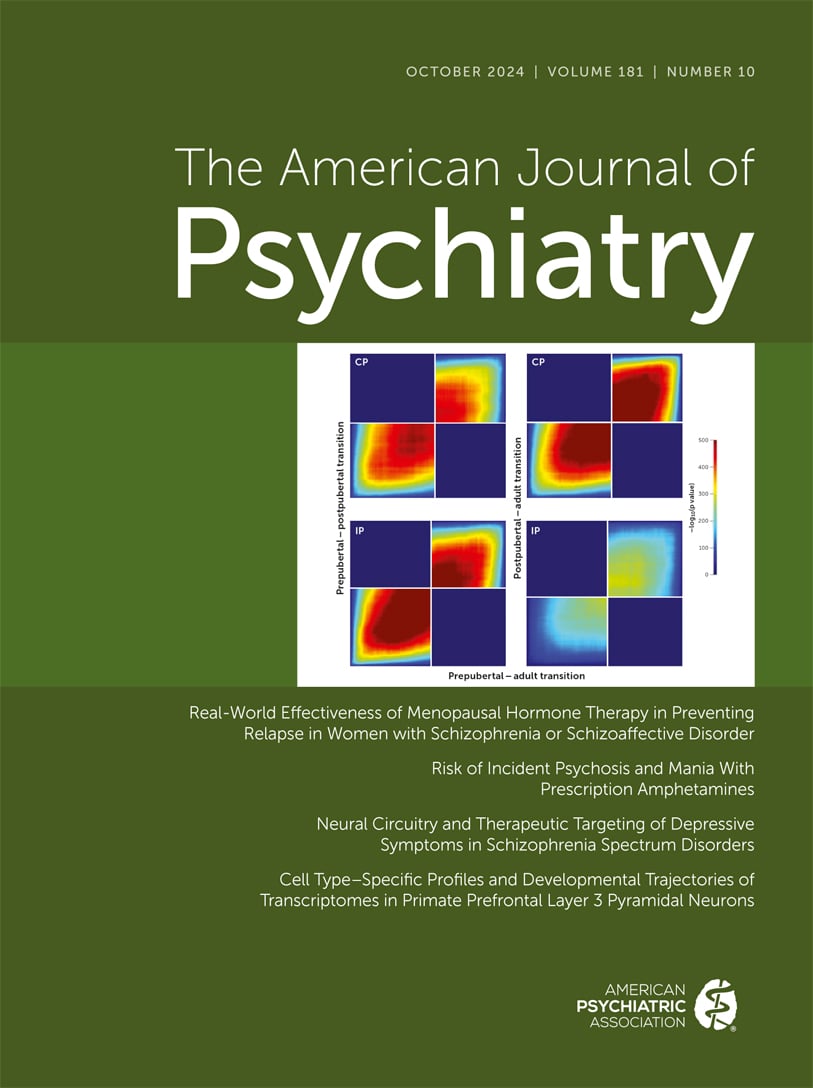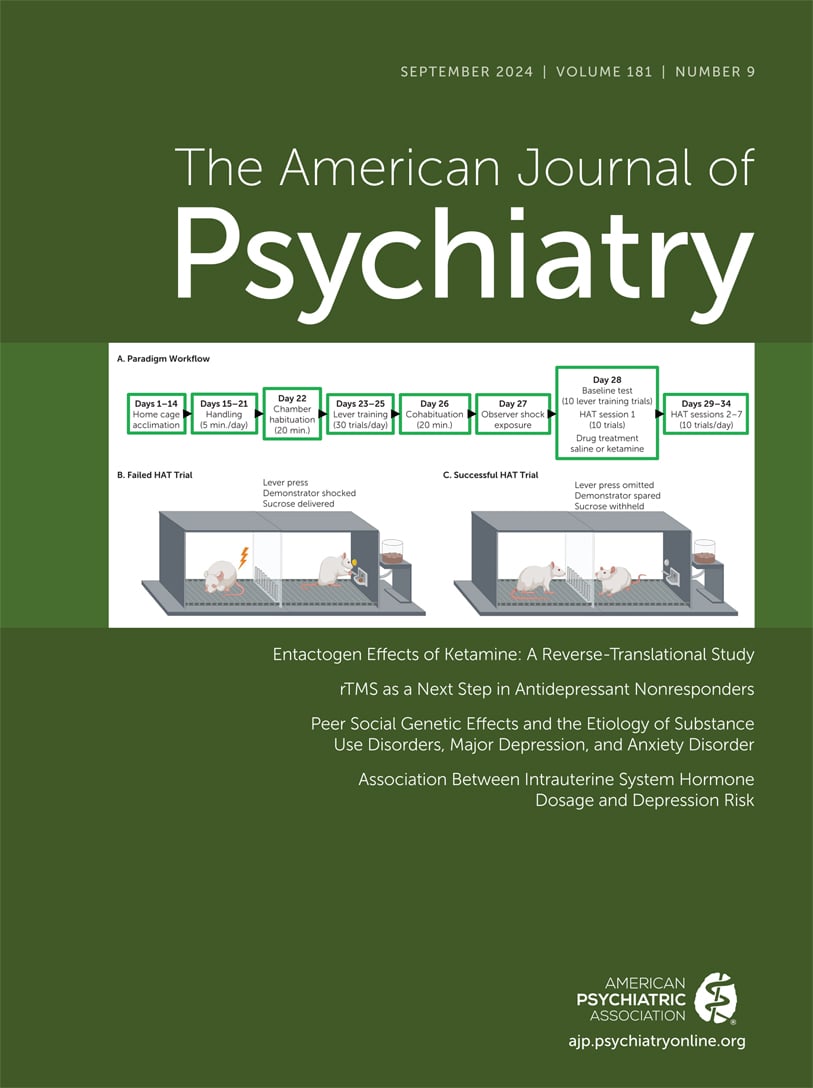American Journal of Psychiatry
- Volume 167
- Number 4
- April 2010
In This Issue
Editorial
Commentary
Introspection
Education in Psychiatry
Publication date: 01 April 2010
Pages381–386Abstract Research collaborations with the pharmaceutical industry can offer valuable opportunities for academic psychiatrists to gain access to important resources. Such relationships, however, often produce significant conflicts of interest, and recent ...
https://doi.org/10.1176/appi.ajp.2009.08121886Images in Psychiatry
Reviews and Overviews
Publication date: 01 April 2010
Pages388–396Abstract Dopamine D2 receptor antagonism is a unifying property of all antipsychotic drugs in clinical use. Remarkably, the effector molecules through which these medications exert their actions remain poorly characterized. Increasing attention is being ...
https://doi.org/10.1176/appi.ajp.2009.08121873Article
Publication date: 01 April 2010
Pages397–408Objective The role of the thalamus in the genesis of attention deficit hyperactivity disorder (ADHD) remains poorly understood. The authors used anatomical MRI to examine the morphology of the thalamus in youths with ADHD and healthy comparison youths. ...
https://doi.org/10.1176/appi.ajp.2009.09030398Publication date: 01 April 2010
Pages409–417Objective Few follow-up studies have been conducted of girls with ADHD, and none have followed girls into adulthood. The authors sought to estimate the prevalence of psychopathology in girls with and without ADHD followed into young adulthood. Method The ...
https://doi.org/10.1176/appi.ajp.2009.09050736Publication date: 01 April 2010
Pages418–426Objective Recognition memory of faces is impaired in patients with schizophrenia, as is the neural processing of threat-related signals, but how these deficits interact to produce symptoms is unclear. The authors used an affective face recognition paradigm ...
https://doi.org/10.1176/appi.ajp.2009.09060808Publication date: 01 April 2010
Pages427–435Objective Activation in a network of language-related regions has been reported during auditory verbal hallucinations. It remains unclear, however, how this activation is triggered. Identifying brain regions that show significant signal changes preceding ...
https://doi.org/10.1176/appi.ajp.2009.09040456Publication date: 01 April 2010
Pages436–443Objective Despite increased exposure to cancer risk factors, several studies have demonstrated a lower incidence of cancer in schizophrenia patients than in the general population. Lower cancer rates in first-degree relatives of schizophrenia patients ...
https://doi.org/10.1176/appi.ajp.2009.09050615Publication date: 01 April 2010
Pages444–450Objective Diminished suppression of the P50 auditory evoked potential is a widely used sensory gating phenotype in the molecular genetic studies of schizophrenia. The aim of this study was to explore the relationship between this phenotype and neuregulin 1-...
https://doi.org/10.1176/appi.ajp.2009.09050723Publication date: 01 April 2010
Pages451–458Objective Impaired cognitive function has been identified as a core feature of schizophrenia. However, a significant proportion of patients do not show any cognitive deficits. The aim of this study was to assess if there were differences in white matter ...
https://doi.org/10.1176/appi.ajp.2009.09050716Publication date: 01 April 2010
Pages459–472Objective Neurocognitive impairments in schizophrenia are well replicated and widely regarded as candidate endophenotypes that may facilitate understanding of schizophrenia genetics and pathophysiology. The Project Among African-Americans to Explore Risks ...
https://doi.org/10.1176/appi.ajp.2009.08091351Letter to the Editor
Book Forum
Books Received
Past Issues
View Issues Archive
Vol. 181 | No. 12

Vol. 181 | No. 11

Vol. 181 | No. 10
